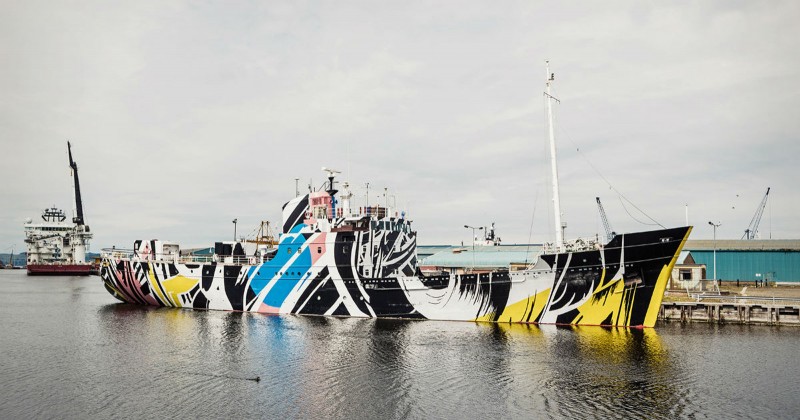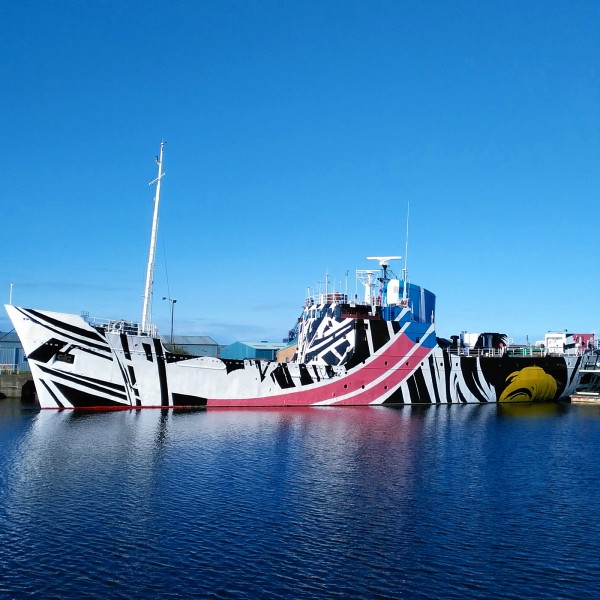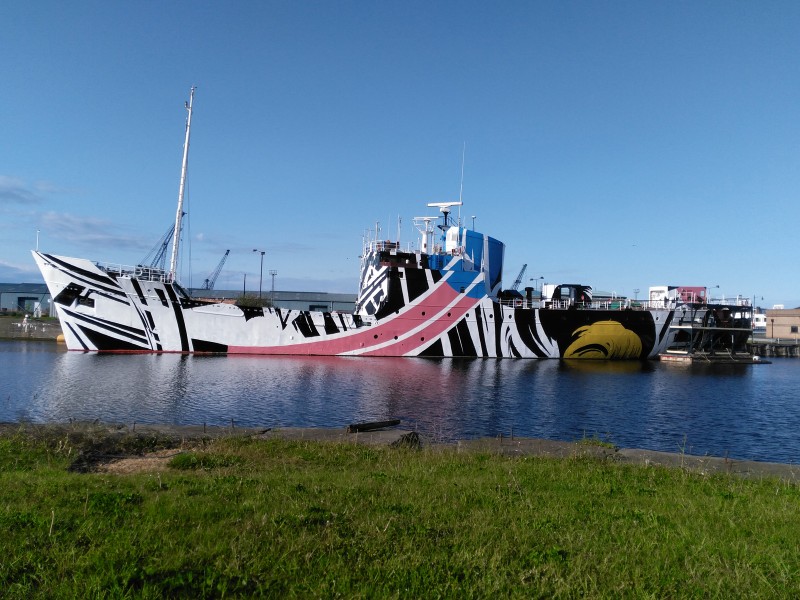Ciara Phillips
Every Woman
Every Woman by Ciara Phillips was one of five floating artworks as Dazzle Ships that were commissioned as a series in partnership with Liverpool Biennial over the commemoration period from 2014 to 2018. They made a visual connection to the hundreds of Dazzle Ships that crossed the seas during the First World War. Every Woman, was the fourth work in the series by the Turner Prize-nominated artist Ciara Phillips to light up the city of Edinburgh.
The launch of Every Woman coincided with commemorations of the First World War on 29 May and 1 June 2016, timed to mark the centenary of the Battle of Jutland. Ciara Phillips, a long-term resident of Scotland, ‘dazzled’ the MV Fingal, berthed at the Prince of Wales Dock in the historic port of Leith. As an artist with a longstanding interest in the history of signs and symbols as they relate to print media, Phillips brought her particular interests and focus to bear on the camouflage patterns that had adorned battle-ready ships in the Port of Leith one hundred years ago. The ship was a central element of Edinburgh Art Festival 2016.
The idea of ’dazzle’, an experimental camouflage painted on to the surface of ships, was pioneered by British artist Norman Wilkinson, who prepared numerous designs for vessels, including US merchant ships, targeted by enemy U-boats. Drawing on avant-garde artistic movements such as Cubism and Vorticism, as well as animal camouflage, these bewildering shapes and angles were designed to confuse the enemy as they struggled to make out the dazzle ships against shifting waves and clouds.
About the artist
Ciara Phillips is a Canadian-Irish artist based primarily in Glasgow, United Kingdom. Her work exploits the traditional use of printmaking practices, taking much influence from collaboration and, more personally, the philosophies of artist and teacher Corita Kent. On 7 May 2014, she was nominated for the Turner Prize for her work at The Showroom in London, England.
A key aspect of Ciara Phillips’ art practice is the compositional techniques that are devoid of traditional representational systems. In other words, Phillips’ work speaks to the idea that no one narrative can possibly account for all aspects of human experience. In a manner contingent with the experimental nature of printmaking — the time, space, and collaborative aspect which distinguish it from directly drawing onto the page — are all key aspects of Phillips’ vision. Along with these aforementioned notions, comes the historical associations of printing with political and social activism. Specific to phillips’ work is an exploitation of these notions, coupled with an effort to re-appropriate the idea of art as an instrument for change.
Much of these ideas stem from the educator and activist Sister Corita Kent, an American Artist and teacher. At the core of much of Phillips’ practice is a collaborative aspect equally functioning as a teaching aspect in the same right. Begging the feminist critique; by turning women into artists; are images created by women different from those created by men?
Co-commissioned by 14-18 NOW and Edinburgh Art Festival




